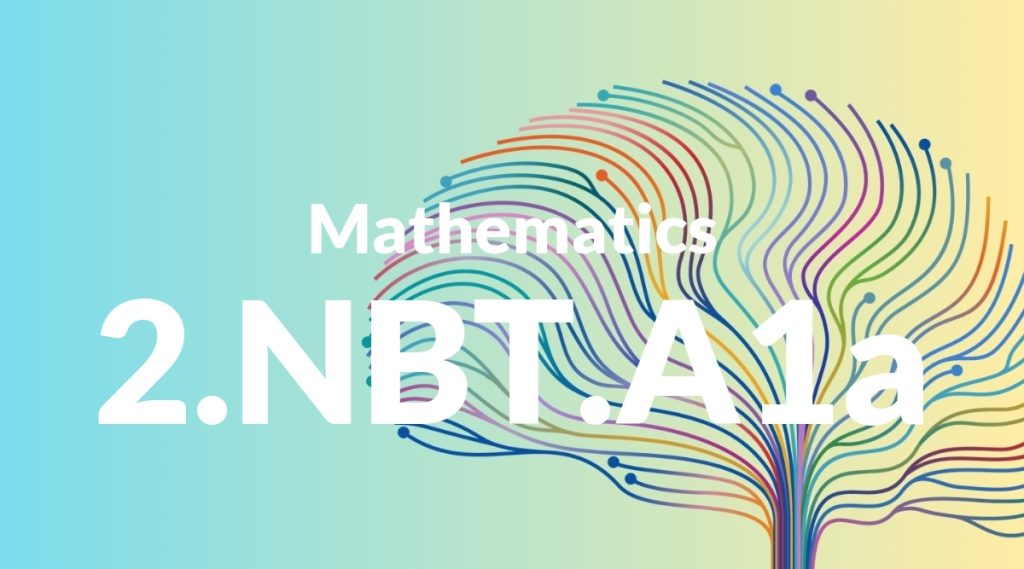Standard: 2.NBT.A1a – 100 can be thought of as a bundle of ten tens — called a ‘hundred.’
Grade level: Grade 2
Subject: Mathematics
Domain: Number & Operations in Base Ten
Teacher Overview
This standard helps students understand the concept of 100 as a bundle of ten tens, which is crucial for developing a strong foundation in place value. Mastery of this concept will aid students in performing arithmetic operations with larger numbers and understanding the base-ten system. Students should be comfortable with counting by tens and understanding the concept of grouping objects into tens.
After mastering this standard, students will be able to understand and work with larger numbers, such as thousands, and perform addition and subtraction with three-digit numbers.
Common Misconception 1
Some students might think that 100 is just a large number without understanding its composition. This misconception can lead to difficulties in grasping place value and performing arithmetic operations.
Intervention 1
Use base-ten blocks or visual aids to show how ten groups of ten make a hundred. Hands-on activities can help solidify this understanding.
Common Misconception 2
Another common misconception is confusing tens and hundreds, where students might think that ten ones make a hundred. This error can hinder their ability to understand larger numbers and perform accurate calculations.
Intervention 2
Provide clear, repetitive practice with grouping ten sets of ten. Use real-world examples to illustrate the concept.
Prerequisite Knowledge
Students should understand the concept of tens and ones, and be able to count by tens up to 100.
Subsequent Knowledge
Students will develop an understanding of place value for larger numbers, such as thousands, and will be able to perform addition and subtraction with three-digit numbers.
Instructional Activities
- Using base-ten blocks to create groups of ten and then bundle them into a hundred.
- Counting objects in groups of ten and then combining them to form a hundred.
- Playing games that involve grouping objects into tens and then hundreds.
- Using visual aids like charts and diagrams to illustrate the concept of ten tens making a hundred.




